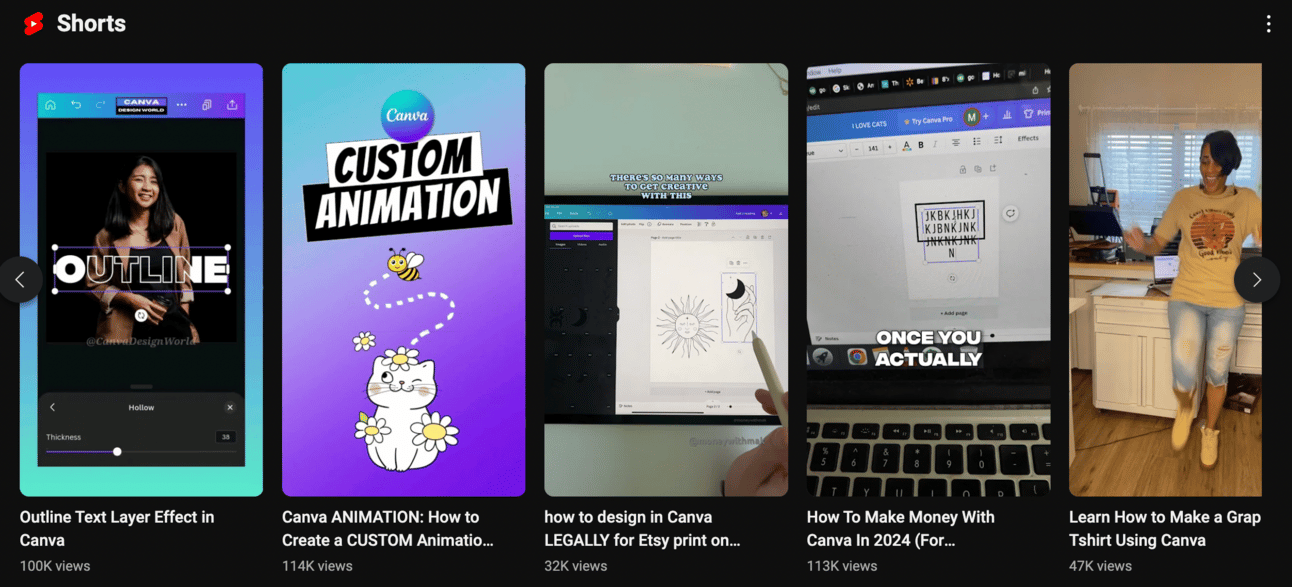
💰 How Canva Built A $40 Billion Empire
Most of you know Canva - the easy-to-use design platform that makes everyone a 5-star designer.
At 19 years old, Melanie Perkins started Canva in her Australian dorm room in 2006.
Since then Canva has:
Reached a $40 billion valuation
Supported over 124 million users
Created over 1 billion presentations with 200 new designs created every second
How did she do it?
Great question.
Today, we’ll talk about how Canva went from a small college side hustle to a $40B company.
Here’s what we got for ya:
🔎 Make Stuff People Search For
🖌 Become An Asset, Not A Feature
🗣 The Word Of Mouth Loop
Read Time: 5 min 1 sec

🔎 Make Stuff People Search For
Canva first started under the name Fusion - A yearbook designer for Australian high schools.
Within a few years, they became the largest yearbook designer software in Australia.
Eventually, people asked if they could use the software to design other things.
The question was, what things would they need Perkins to help them create?
The solution was simple…
“Make stuff people search for” - Harry Dry
When people use design tools like Adobe, they usually buy the software to design a specific thing: Email templates, logos, social media posts…
So instead of pitching itself as the best design platform on the market, Canva offers the exact tool people are searching for:

And best of all? It’s free.
This does two things for Canva:
Gives them a high SEO rank by naming their landing pages after high-traffic terms
Beats the competition by offering what others charge for, for free
Canva then makes its money via upsells and premium features.
Grammarly (a grammar tool) does something similar to rank high on SEO. They post articles explaining misspelled words.

Not only does this build authority, but the search competition for a misspelled word is low.
(In 2020, Grammarly ranked #1 for the keyword “nevermind”)
Make stuff people already search for.
Grammarly’s Google Hack - How Grammarly hacked Google to bootstrap from $0 to $7M in 8 years (4 min read)
Exploding Topics - A great online tool that shows you what topics people are searching for

💥FREE AI & ChatGPT Workshop (New Year Offer)
Join this 3-hour ChatGPT & AI Workshop (worth $99) by Growthschool to master AI tools and ChatGPT hacks at no cost.
With AI & Chatgpt, you will be able to:
✅ Make smarter decisions based on data in seconds using AI
✅ Automate daily tasks and increase productivity & creativity
✅ Skyrocket your business growth by leveraging the power of AI
✅ Save 1000s of dollars by using ChatGPT to simplify complex problems

🖌 Become An Asset, Not A Feature
When you build a product, you have one goal - to build something that everyone wants and can’t live without.
And how do you do that?
Offer them something they need that cannot be matched by someone else
Spotify → Your playlists
Apple → The Apple Ecosystem
YouTube → Learn anything for free
Before Canva, if you wanted a professional-looking design you’d have to hire a designer.
And simply put… that’s not cheap.
So when Canva came along, it was the first time those on a budget could compete with companies that hire designers.
(For reference, it’s like when no-code came to the internet.)
And because of this, Canva has quickly become an asset.
Need a professional PowerPoint template? Canva.
Need a new business card? Canva.
In other words, it is inconvenient to NOT use Canva because you can’t compete with those who do.
Offer buyers something they can rely on to reach their goals so that you become an asset, not a nice-to-have feature.

🗣 The Word Of Mouth Loop
As I said, Canva started as a college side hustle on a small budget.
Almost 100% of the budget went to building the software. Not marketing.
So, Perkin’s had to master the skill of organic marketing (not an easy feat in 2006).
Today Canva has made over 30% of its revenue via organic content.
Mainly by using growth loops.
In our article ‘The Secret To Free Marketing’, we talked about how businesses like Loom and DoubleTree grow via the Word-Of-Mouth Loop.

Canva sparks this loop by:
#1 - Solving a large enough market gap that gurus use them as their ‘secret weapon’ to making money online

#2 - Incentivizing Canva users to post tutorials on their YouTube pages

#3 - Allowing users to collaborate with non-Canva users for free

(Loom uses this tactic as well)
High search demand + Organic content = Winning Product
The Secret To Free Marketing - 3 growth loops you can use to get more buyers for free


